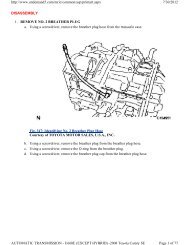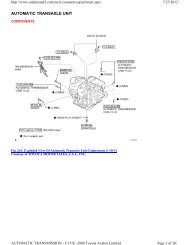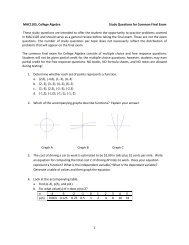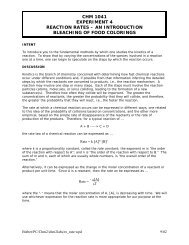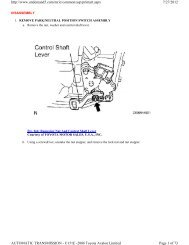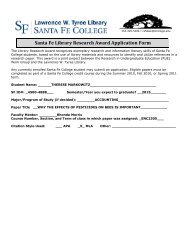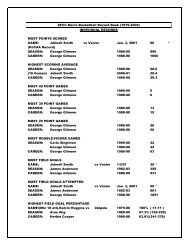Lab 8 Vertebrate homologies:Layout 1.qxd
Lab 8 Vertebrate homologies:Layout 1.qxd
Lab 8 Vertebrate homologies:Layout 1.qxd
You also want an ePaper? Increase the reach of your titles
YUMPU automatically turns print PDFs into web optimized ePapers that Google loves.
Incisors: Well developed chisel-shaped teeth with a<br />
cutting edge. These teeth are primarily used for obtaining<br />
food.<br />
Canines: Conical shaped teeth that are adapted for<br />
stabbing, holding, or tearing.<br />
Premolars: Teeth that contains several points (cusps)<br />
for tearing and slicing<br />
Molars: Largest of the teeth that may contain points in<br />
carnivores. In herbivores they are usually flat and<br />
adapted for grinding cellulose in plant cell walls. Both<br />
the premolars and molars are used primarily for chewing.<br />
The dental formula is a shorhand notation expressing<br />
the number of each kind of tooth in the jaws. Teeth in<br />
the upper jaw are noted above the line; those in the lower<br />
jaw are noted below the line. Using the human as an<br />
example, the dental formula would be written as such:<br />
incisors(4)-canine(2)-premolars(4)-molars(6) in upper jaw = 16<br />
incisors(4)-canine(2)-premolars(4)-molars(6) in lower jaw = 16<br />
Total number of teeth = 32<br />
The basic design of teeth and jaws in mammals is similar. However, there are adaptations based<br />
on the primary food source of the mammals.<br />
Omnivores, such as pigs and bears and humans, may eat anything, including vegetation and meat.<br />
The molars and premolars are adapted for both grinding and crushing.<br />
Carnivores, such as cats, dogs, and wolves are meat eaters. They have teeth that are welldifferentiated<br />
and adapted for securing and eating flesh. The canines are long and sharply-pointed<br />
for seizing and tearing prey. The premolars and molars are flattened laterally and have sharp edges<br />
for cutting. The skull is also adapted for the attachment of strong muscles required for meat eating.<br />
Insectivores, such as moles, some species of bats, shrews, and hedgehogs do not have well<br />
differentiated teeth. All of the teeth are short and have sharp points (cusps).<br />
Herbivores, such as cows and deer are plant eaters. The incisors are flat and sharp for cutting off<br />
vegetation or, in the case of browsers, the upper incisors may be absent. The canine teeth may also<br />
be absent in herbivores, leaving a space between the incisors and the cheek teeth (premolars and<br />
molars). The cheek teeth are broad and flat to provide a large surface area for grinding and mashing<br />
8-2







